The Changing Roles of Higher Education
After nearly two years of teaching exclusively online, I began teaching in person today. A little nervous but pumped regarding the prospect of seeing students in person again.
This led me to think about what kind of experience students will want in this near-to-the-end pandemic world we are entering. It was then that I came across an article, written by Dana Abdrasheva, Diana Morales, and Emma Sabazlieva, in University World News, an online newsletter, that led off with the title, How Do Students Want Universities to Change in Future?
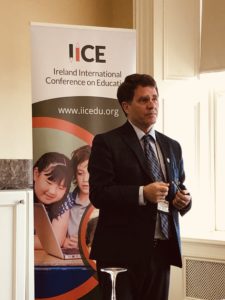
This article presented a summary of a UNESCO report, Thinking Higher and Beyond: Perspectives on the Futures of Higher Education to 2050, which presented the views of students from around the world who participated in one of 55 focus group consultations conducted in 2020-21 as part of UNESCO’s Futures of Higher Education project. Some of the themes identified include:
- Campus experience will be transformed: Campus experiences will be complemented (but not replaced) by integrating technology into teaching and learning.
- A shift from mobility to engagement: Recognized that “mobility will turn into connectivity” and that travelling to other countries might not be necessary to acquire an international educational degree.
- Co-creation of learning environments: “New forms of knowledge construction, based on cooperative and collaborative relationships between teachers-students and students-students” will result in more co-creation of learning.
- Higher education and the labour market: Links between higher education and the job market are of prime importance, with many calling for more “market-ready” preparation.
- Global processes linked to local communities: Connectivity is seen as the big takeawaywith calls for increased connections between global and local communities.
The big question is whether we, in higher education, are ready to attend to students’ views on the changing roles of higher education.
Throughout the pandemic, I can recall conversations with students who lamented about the loss of in-person instruction, while others asked for their courses to remain online. This led me to conclude that it is not one way or another, but looking at what is needed and then delivering the student experience as close to that vision as possible. This does not mean we will return fully in person, but neither does it mean we will stay fully online. We need to do what is best for our students, and in doing that, we will find a higher education experience where the campus experience is transformed, our focus is placed on engagement, we engage with our students as partners in learning, and connect our work with the labour market and global communities.
These are fascinating times!
-Clayton Smith
Beyond COVID: A SEM Perspective
There has been so much discussion about “getting back to normal” or creating “the new normal” during these pandemic times. What we know is that, with past pandemics, we have seen the upending of critical structures, such as health systems, economic life, socioeconomic class structures, and race relations. (De Witte, 2020). The impacts have included the way our institutions and communities operate, as well as how family members interact with one another. Today, I find myself wondering what the impact will be on post-secondary education and how it will adjust to whatever normal that may emerge following the COVID-19 experience.
A short time ago, I had the pleasure to convene a webinar panel discussion, Coming Out of COVID, in which four enrollment leaders from the U.S. and Canada shared their views on how post-secondary institutions will approach life after the pandemic. A common thought was the need to develop a sense of urgency on campus so that the pinnacles of SEM can be maintained (institutional wellness, operational efficiency, and student success). Some of what they said also touched on these topics:
- Communications, communications, and more communications
- Flexibility
- Finding the right balance between online and in-person student experiences
- Supporting the staff who serve at the student touch points
- Variable impact on different student populations, and that one process may not work for everyone
- Affordability, with many students left with financial challenges due to the pandemic
At the recent American Association of Collegiate Registrars and Admissions Officers Strategic Enrollment Management Conference (the first in-person conference I have attended in two years!), we heard from our keynote speakers on this topic. Here are a few highlights:

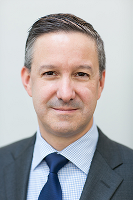
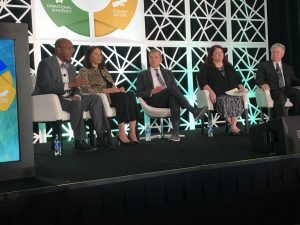
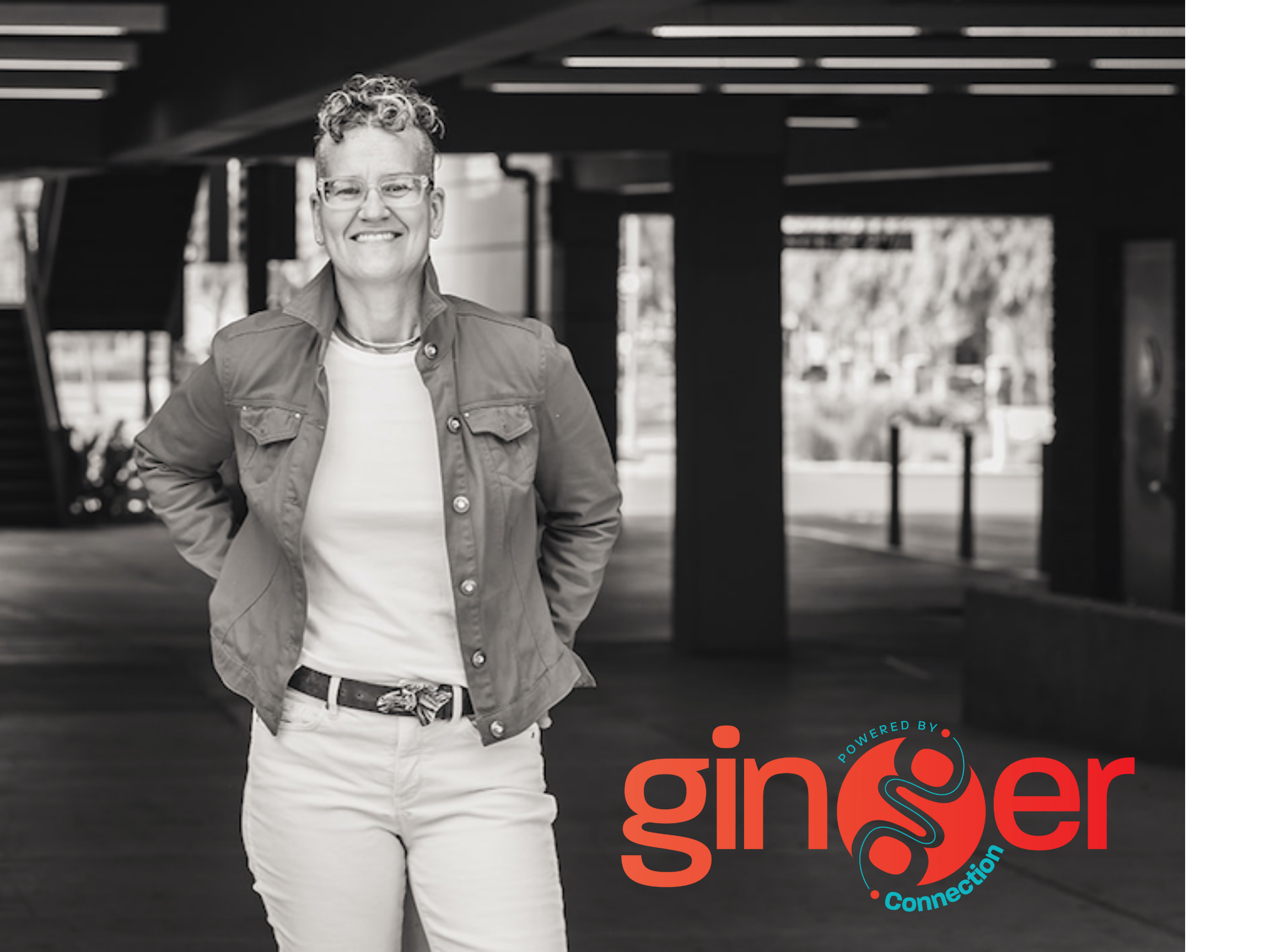
- Dr. Gregory Fowler, president of University of Maryland Global Campus, called on us to “improve end-to-end the student experience.” He challenged us to cultivate human skills, recognize that learning is everywhere, and educational institutions need to support the learning that people need across their lifetime.
- Jeff Selingo, author of two New York Times bestsellers , College (Un)Bound and There is Life After College, and the new book Who Gets in and Why: A Year Inside College Admissions (which he signed a copy for me!), described the student experience as about learning “how to negotiate relationships.”
- A higher education panel (Dr. Monica Parrish Trent, Achieving the Dream; Dr. Dhanfu Elson, Commplete College America; Dr. Kevin Pollock, Central Carolina Technical College; and Laura Clark, Virginia Community Colleges) spoke about the importance of supporting learning and student success across all student demographics, with a particular focus on those who start their post-secondary learning in community colleges.
- Ginger Johnson spoke about “At the Table of SEM,” we need to move from networking to connecting; that by connecting with each other, we can truly transform our learning organizations. Specifically, she called on us to 1) seek alignment as a way to transform our institutions and not just change them, 2) keep things simple by being productive while being “seen, valued, and heard,” and 3) support belonging by “always having time to connect” with one another. Ginger graciously left us with signed copies of her book, Connectivity Canon: Why and How to Connect with People on Purpose with a Service Mindset.
Pulling all of this together and reflecting on what our new normal will become, I find myself being optimistic regarding all the things we can do in higher education. It also makes me return to my teaching philosophy, Teaching for Learning, in which I describe education from the learner’s perspective; that our task is to create “educational environments that enhance learning and by engaging students individually in ways that inspire them.” This can best be done when we attend to the SEM trilogy of student success, institutional wellness, and operational efficiency while taking into account our takeaways from the pandemic.
I can hardly wait to see what we come up with!
-Clayton Smith
De Witte, M. (2020). Past pandemics redistributed income between the rich and poor, according to Stanford historian. Stanford News. https://news.stanford.edu/2020/04/30/pandemics-catalyze-social-economic-change/
Moving Toward the Re-imagined University
Higher education may have been forever changed by the COVID-19 pandemic.
A Pearson Global Learner Survey (2020) found that of three, out of every four, global learners believe that “education will fundamentally change as a result of the pandemic” (p. 5) and colleges and universities will fundamentally change. Most think that online learning will be part of the university student experience post-pandemic. And, interestingly, trust in education is rising as education systems receive higher marks than ever for quality, despite all the disruption resulting from the pandemic.
One educational consultant, Marguerite Dennis (2021), commented recently that the pandemic experience has highlighted a number of issues of concern. Some of these include rigid enrolment procedures, poor retention rates, lack of alignment between academic credentials and employable skills, mental health needs of students, space utilization, and relationships with students before and after graduation. Dennis believes it is time for higher education to create the “reimagined university.” Reimagined universities would be led by chief executives who have both the vision and ability to champion new ways of leading their institutions and can lead their institutions to embrace life-long learning.
The University of Windsor has begun to embrace this challenge. Dr. Robert Gordon, president and vice-chancellor at the University of Windsor recently commented,
It’s going to be a different world when we go back to some of the ‘new normal.’ There are going to be different and heightened expectations of how people interact with one another, but I think its going to be appropriate for us to make sure that we’ve learned from this and that we can adopt new approaches to how we support our institution through those lessons learned.
Mighton, 2021, p, 23
One pathway to consider comes from the world of strategic enrolment management (SEM), which has helped institutions face the challenges that have come our way previously. We have seen natural disasters, economic recessions, and changing demographics. By applying SEM principles, we have successfully led our post-secondary institutions toward enrolment health and student success.
The core SEM purposes include:
- Creating a data-rich environment to inform decisions and evaluate strategies that support strategic dexterity and identification of scenarios;
- Establishing clear goals for the number and types of students needed to fulfill the institutional mission and building options and scenarios;
- Promoting students’ academic success by improving access, transition, persistence, and graduation;
- Promoting student and institutional success by assuring effective academic program planning and assessing options to match need and demand;
- Improving process, organizational and financial efficiency and outcomes; and
- Increasing communication and collaboration among departments across the campus to support healthy enrolment and a healthy institution.
Smith and Kerlin (2020) suggest pursuing these purposes by using six SEM tools to manage our way through these changeful times. They include systems thinking, link-integrate-extend, strategic dexterity, building scenarios, collaboration, and change management.
The key to unleashing SEM to help our institutions confront the significant challenges that lie before us is to engage in collaborative dialogue across the campus to ensure that each of us can find effective ways to support the development of our re-imagined universities.
-Clayton Smith
References:
Dennis, M. (2021). Imagination and innovation in higher education, bulletin 46. Naples, FL: MJDennis Consultants.
Mighton, D. (2021). The life of a wartime president: Robert Gordon discusses the effects of the pandemic on University of Windsor students. The Drive, 34, 22-23.
Pearson (2020). The global learner survey. London: Pearson. https://www.pearson.com/content/dam/one-dot-com/one-dot-com/global/Files/news/gls/Pearson_Global-Learners-Survey_2020_FINAL.pdf
Smith, C. & Kerlin, C. (2020). SEM Institute. Presented at the 2020 virtual AACRAO Strategic Enrollment Management Conference. Washington, DC: American Association of Collegiate Registrars and Admissions Officers.
Taking Time to Ponder
Harvard psychology professor Ellen Langer said something on this week’s Sunday Morning news show that caught my attention and put me on a reflective path.
Langer said that human beings are unique in their ability to think about the future, which leads us to be thinkers about our unique and collective futures (Weisfogel & Ross, 2020). While recognizing that plans create an illusion of control and that plans are guesses, these uncertain times call for us to contemplate and hope about what is to come. Langer goes on to say, “But what we need to recognize is that if something leads us in a different direction, that could end up even better for us.” So, in other words, by taking time to ponder, we each may be able to find a pathway toward a different but perhaps more enjoyable destination.
I thought about this all day.
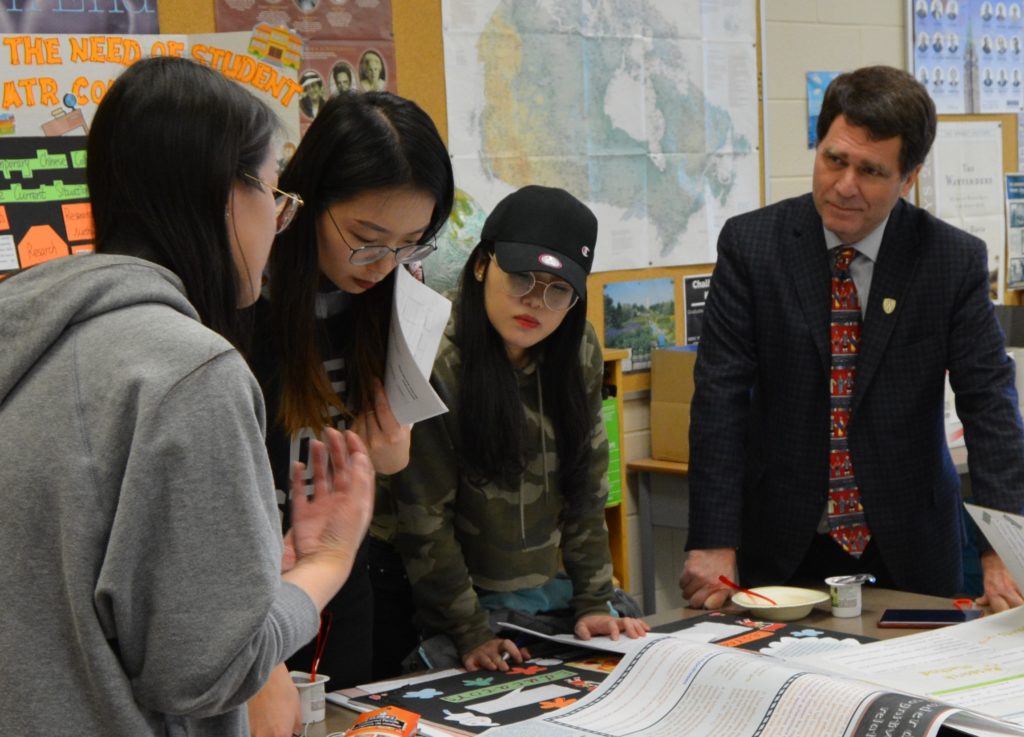
Since returning to teaching four years ago, I have focused my research in three areas. First, I have continued my career-long work in critically assessing the impact of Strategic Enrolment Management on the twin goals of achieving institutional health and student success. Second, I renewed my interest in the international student experience by exploring student perspectives on the way we teach in our colleges and universities and how we can improve our teaching of culturally and linguistically diverse international students. Third, after coauthoring two open educational resource (OER) textbooks and making increasing use of OERs in my teaching, I am beginning to focus on how we can achieve deep and interdisciplinary learning by enhancing our use of OERs.
While each of these research threads are different, it occurred to me that there is common ground between them; namely, the amplification of the student voice. If ever there was a time to pay more attention to student views, it is now. The COVID-19 Pandemic has left so many of us questioning the future. This includes students, faculty and staff, and those who lead our postsecondary educational institutions.
Psychiatrist Pavan Madan, who was also interviewed on Sunday Morning, spoke about the anxiety that is impacting us all. Dr. Madan suggests that “we put our big dreams aside for now and focus on the small, more manageable details of daily life” (Weisfogel & Ross, 2020).
So, in this public space, let me say that during the balance of the time we have in the Pandemic and for the time to follow, I will commit to amplifying the student voice in all I do.
If this interests you, consider joining me (Clayton.Smith@uwindsor.ca). I am thinking that both the journey and the destination will be quite enjoyable.
Clayton Smith
Weisfogel, A. & Ross, C. (27 December 2020). Going to Plan B: When COVID pulls the rug out from under you. Sunday Morning. New York: CBS. https://www.cbsnews.com/news/going-to-plan-b-when-covid-pulls-the-rug-out-from-under-you/?ftag=CNM-00-10aab8c&linkId=108041071
Crises as Catalysts for Transformation
At last week’s American Association of Collegiate Registrars and Admissions Officers’ (AACRAO) virtual Strategic Enrollment Management (SEM) Conference, nearly 500 attendees learned about ways to confront the crises facing colleges and universities in order to transform higher education and achieve student and institutional health.
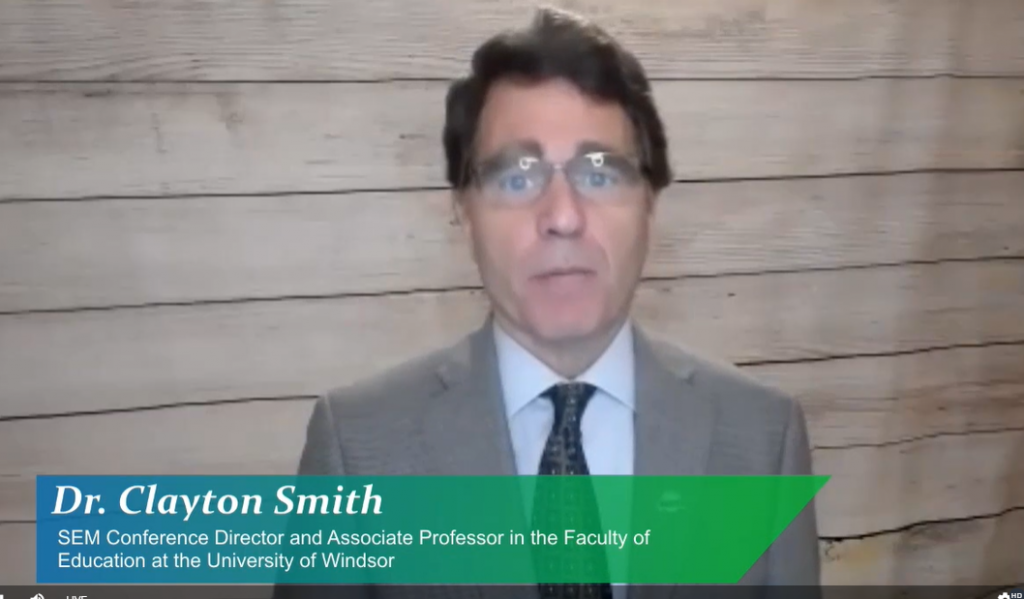
But what was even more amazing was the discussions surrounding the nexus of SEM and social justice, all with an eye toward taking action to create campus cultures that are accessible, anti-racist, and inclusive. It is one thing to acknowledge the social justice crises we face. It is something else to commit to taking action to change the face of higher education. And that is what many conference participants did.
On the third day of the conference, we engaged in panel sessions that spoke to topics like strategies for embedding equity in SEM; holistic admissions; the future of admissions; social justice, racial equality and standardized testing; and whether institutions can compete for students and cooperate to realize greater social mobility.
We also heard from Academy Award winner Matthew A. Cherry on “higher education, social justice, and equity,” in which he reflected on his personal and professional experiences to help conference participants connect with how racial equality and social justice impacts all of our lives.
Our day was capped off with a Commitment to Change facilitated by Philip Hunt, University Registrar at North Dakota State University, and performance of “Glory,” from the Academy Award-winning movie Selma by the world-renown Detroit Youth Concert Choir. We were all deeply moved.
AACRAO’s Commitment to Change reads:
“I pledge to take action by engaging in efforts at the association and on my campus that promote access, equity, inclusion, and anti-racism to provide equitable pathways for student success and support for underrepresented faculty and staff. This includes using my skills, talents and voice to serve my campus, AACRAO and our membership.”
I will be forever humbled by this incredible experience.
-Clayton Smith

Empathy Matters
At this year’s U.S. Democratic National Party Convention, empathy took centre stage as former vice-president Joe Biden accepted his party’s nomination to be its candidate for president of the United States. Each of his endorsers touted Biden’s “ability to connect with what someone else is feeling and pointed to that characteristic as making him uniquely qualified to lead the country, particularly during a time of crisis like the coronavirus pandemic” (Merica, 2020, para 2). Words like honesty, humility, empathy, and grace were heard from many of the convention speakers, including U.S. Senator Elizabeth Warren and former President Barack Obama, both of whom know something about achieving change during a crisis.
While introducing my first-year fall 2018 EDUC 1199 Teaching and Learning (Part One) students to various perspectives on the year one classroom observation field experience, we heard Ms. Bridget Russo, a retired principal in the Windsor-Essex Catholic District School Board say something that I have shared with each of my classes since. The question posed to the panel was this: “What advice do you have for first-year Concurrent Education students as they embark on their first field experience?” Ms. Russo said, “show empathy.” She reflected that of all the things that students bring to their field experience, the most important is empathy. With it, so much can be accomplished. Without it, nearly nothing can be achieved.
These two events, while vastly different, point to the importance of empathy in our time. But what is empathy and why is it so important?
The Merriam-Webster dictionary defines empathy as
“the action of understanding, being aware of, being sensitive to, and vicariously experiencing the feelings, thoughts, and experience of another of either the past or present without having the feelings, thoughts, and experience fully communicated in an objectively explicit manner.”
Sometimes there can be confusion between empathy and compassion. Compassion refers broadly to sympathetic understanding, while empathy is the ability to relate to another person’s pain as if one has experienced that pain themselves. It involves seeing their world, appreciating them as human beings, communicating understanding, and understanding feelings (Sahota and Lewitz, 2014).
So, in the case of the crises currently facing the U.S., empathy would be the ability to relate to being a victim of the coronavirus or racial inequality. In the case of teacher candidates attending their first field experience, empathy would be the ability to connect with students in or near the classroom setting, some of whom are experiencing significant challenges while others are impacted by various barriers to their own learning.
As the doors to the academy open this week, let me suggest that each of us reach deep within our hearts, minds, and souls to find empathy for all those we meet. Each of us faces our own challenges, and it is so important that those we come in contact understand a little of what each of us is going through.
The Avatar (2009) film captures this well when Neytiri says to Jake and Jake says to Neytiri “I see you.” This means when you see me you bring me into existence.
I’ve got to think that by seeing the people we meet, we can make a difference in their lives and in our lives too.
So, empathy really matters!
References:
Merica, D. (2020, April 15). ‘Empathy matters’: Joe Biden’s endorsers highlight the same trait. CNN Politics. https://www.cnn.com/2020/04/15/politics/joe-biden-empathy/index.html
Sahota, M., & Lewitz, O. (2014). Co-aching: How to use compassion to transform your effectiveness. Agile Alliance Conference, Orlando, FL.
A Tale of Two Cities
Today, I find myself reflecting on Charles Dickens’ 1859 historical novel, A Tale of Two Cities, in which he tells the story of French doctor Alexandre Manette, released from the Bastille prison after an 18-year imprisonment, which was based on dubious charges. Dickens describes the conditions leading up to the French Revolution and the Revolution itself, that connects the arrogant behavior of the aristocracy to the revolutionaries’ political, social, and economic demands for justice. Dickens sets forth the idea that resurrection and transformation are both possible on personal level and societal levels.
In the opening sentence, Dickens writes:
It was the best of times, it was the worst of times, it was the age of wisdom, it was the age of foolishness, it was the epoch of belief, it was the epoch of incredulity, it was the season of Light, it was the season of Darkness, it was the spring of hope, it was the winter of despair, we had everything before us, we had nothing before us, we were all going direct to Heaven, we were all going direct the other way—in short, the period was so far like the present period, that some of its noisiest authorities insisted on its being received, for good or for evil, in the superlative degree of comparison only.
Much of what Dickens saw in the 19th century is reflected in our discussions today regarding the crises facing higher education in North America. Many of us continue to believe that through resurrection and transformation, we can change as individuals and as a society. What is increasingly clear is that we cannot go it alone. We will need to find ways to join together to improve and transform our individual post-secondary educational institutions and the system of higher education as a whole.
Let’s think on this within the context of the two major crises that are present in our world now.
As of today, according to the World Health Organization, there are 8,708,008 confirmed cases (nearly 30% in North America alone) and 462,715 deaths attributed to the COVID-19 pandemic, resulting from an infectious disease caused by a newly discovered coronavirus. Henry Chesbrough, Faculty Director of the Garwood Center for Corporate Innovation at the Haas School of Business at UC Berkeley, writes that the pandemic “is placing many universities under extreme budget pressure, owing to the loss of high-margin international students” (para 1) that may result in some campuses not opening in the fall and others further discounting tuition to students. Many other institutions have announced plans to offer online only or mostly online instruction. Taken together this will likely impact educational access and success for first generation, marginalized and low-income students.
On May 25th, George Floyd, a 46-year-old black man, was killed in Minneapolis by a white police officer, who knelt on Floyd’s neck for almost nine minutes while Floyd was handcuffed and lying face down, begging for his life and repeatedly saying “I can’t breathe.” (BBC, 2020) This has led to demonstrations in the U.S., Canada, and throughout the world against police brutality, police racism, and a lack of police accountability. Post-secondary leaders responded by issuing statements that “condemned the killing of Floyd and implored the community to seek out opportunities for kindness.” (Burke, 2020, para 1) Conversations and actions to address systematic racism will likely dominate discussions at North American campuses in the months and years to come.
The questions that are central to my reflection are these:
- What is the role enrollment management should play in responding to these crises?
- What can or will the enrollment management community do to address each of these crises?
- How will we position ourselves to be ready to help our institutions with future crises?
I believe that we are up to the tasks that lie ahead, but also believe it will take more than individual effort to make a difference. We will need to come together as colleagues and caring persons to face these challenges and respond to these important questions. Toward that end, our national association, the American Association of Collegiate Registrars and Admissions Officers, has decided to face these questions by convening the 2020 Strategic Enrollment Management Conference virtually and focus on the theme, “Crises as Catalysts for Transformation: 2020’s Impact on Higher Education and Enrollment.”
As the conference director, let me encourage you to submit a session, stop and share, poster, or roundtable proposal that highlights your experiences, best practices, and solutions. The Call for Proposals is now open. The proposal due date is July 31, 2020.
If I can be of any assistance, please write to me at smithc@aacrao.org.
-Clayton Smith

References
BBC News (May 30, 2020). George Floyd: What happened in the final moments of his life. https://www.bbc.com/news/world-us-canada-52861726
Burke, L. (June 1, 2020). College leaders respond to death of George Floyd. Inside Higher Ed. https://www.insidehighered.com/quicktakes/2020/06/01/college-leaders-respond-death-george-floyd
Dickens, C. & Schama, S. (1990). A tale of two cities, book the first, chapter 1. New York: Vintage Books.
Furber, M, Burch, Audra D. S., and Robles, F. (May 29, 2020). What happened in the chaotic moments before George Floyd died. The New York Times. https://www.nytimes.com/2020/05/29/us/derek-chauvin-george-floyd-worked-together.html
World Health Organization (June 21, 2020). WHO Coronavirus disease (COVID-19) dashboard. https://covid19.who.int/
Scary and Fascinating: Online Teaching in Challenging Times
Have you ever started writing on a topic and then something happens that changes everything? Well, that just happened to me. About a month prior to the COVID-19 pandemic, I was writing on the growing interest in and support for open and online learning in postsecondary education. Then poof! COVID-19 changed everything. Today I will share with you some of my initial thoughts on this topic and then reflect on how the events of the last month changed some of my thinking.
Here are some of my initial thoughts.

Following completion of the University of Windsor Office of Open Learning’s Certificate of Online and Open Learning and attendance at eCampusOntario’s Technology + Education Seminar + Showcase (TESS) conference, I initiated a study to explore the connection between the promising practices for teaching online linguistically and culturally diverse international students and student satisfaction and student perceptions of learning, which has recently received research ethics approval but is now paused. An overview of this study is available on my faculty web page. Also, working with two University of Windsor colleagues (Mark Lubrick and Carson Babich), I oversaw the writing of my first Open Educational Resource textbook (Leadership and Management in Learning Organizations), which we hope to publish in the next few months. All of this opened my eyes to the possibilities of online learning within the higher education sector.
And then, just before the pandemic broke, I enjoyed reading the Wiley Education Services study, “Student Perspectives of Online Programs: A Survey of Learners Supported by Wiley Education Services” (Magda & Smalec, 2020), in which student satisfaction with online learning was explored at 19 institutions where students were enrolled in Wiley-supported programs. The study provided some fascinating insights that showed ways to better meet student needs and expectations, including examine the complete student journey to remove barriers to flexibility, create a consistent learning experience to alleviate unneeded stress, and empower faculty to engage with students to improve the learning experience.
And here is a little of what we knew about online learning in North America before COVID-19.
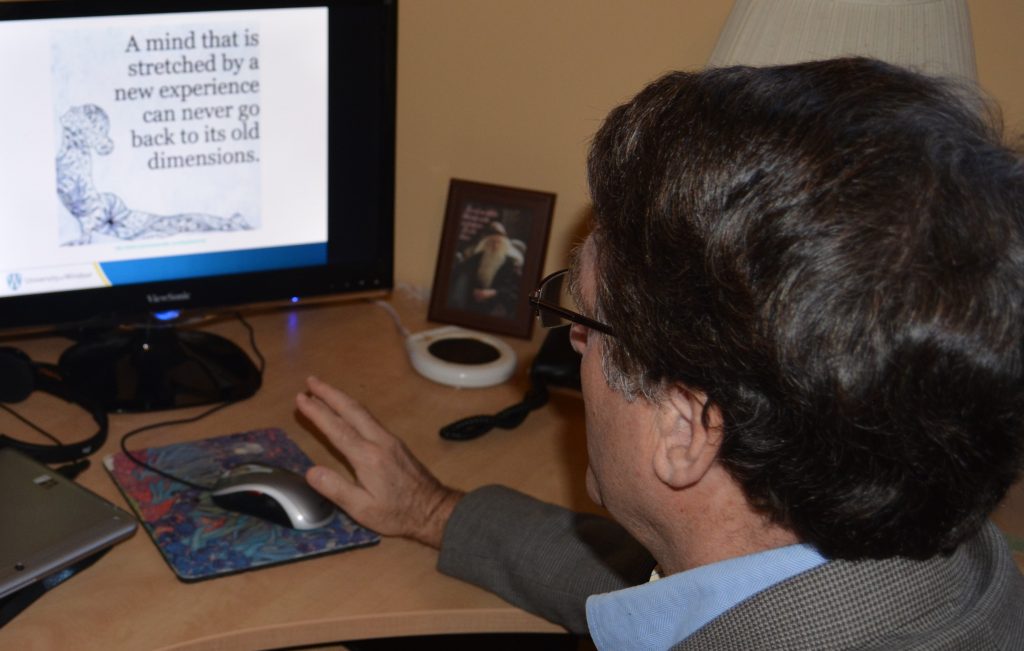
North American online education has seen a rise in popularity in recent years. The Canadian Digital Learning Research Association reported that Canadian postsecondary online course registrations grew by 10 percent in 2018 and 2019, and most institutions expect enrollments to increase in the coming year (Johnson, 2019). The U.S.-based National Center for Education Statistics (Ginder, Kelly-Reid, & Mann, 2017) reported that the number of students who take at least some of their courses online grew by 5.7 percent in 2017. More than 25 percent of students take at least one online course during their time at university of college (Cook, 2018). Undergraduate international students attending Canadian institutions are increasingly choosing to take online courses (Best Colleges, 2019; Thomson, & Esses, 2016).
And here is some of my thinking since COVID-19 joined our world.
Like most faculty, I found myself scrambling a bit to convert my in-person courses, some of which were hybrid courses, to fully online courses. With lots of support from our Office of Open Learning and Centre for Teaching and Learning, as well as experienced colleagues, I made the leap. It was a bit scary, but also fascinating.
On the scary side, there is me. While I had recently acquired professional development in open and online learning, I am an in-person educator who greatly enjoys the interaction with students. Seeing their smiles and their fears is a big part of how I ensure a learning-centred classroom environment. When this all moved to being digital, I, like many of my colleagues, was petrified. Then there are my students, who were equally scared since all of this happened within the last three weeks of the semester. Fortunately, our university put in place a flexible approach that included assessments and grades, which allayed many of their fears. But not all.
When I had my students online, I asked them about their experience. Here is what an international graduate student said:
While we miss the in-person connections with other students and our professors, going online was not really a problem. When I delivered a facilitated reading discussion, I found that I had more confidence due to my comfort with digital technology. I also found that there was more participation in class. Although in-person instruction is my preference, I found aspects of my online classes to be better than expected. In some cases, preferable to my in-person experience!
I also found the whole process fascinating. What we know is that our classes are filled with digital natives; that is, students who have always had technology in their lives. Taking ourselves, who might be described as digital immigrants, out of our comfort zone and letting students be our guides through this new digital world I found exciting and a little fun. It provided a flipped classroom of sorts where the students were doing some of the teaching, and we became the students. What could be more exciting?
Like many other postsecondary institutions, my university is offering its summer courses fully-online. There is also the likely possibility that fall classes similarly will be fully-online. Finishing off a term with online lectures is one thing. Moving to all courses, from beginning to end, being online is something all together different. The good news is we will all be doing it together.
Scary but fascinating!
-Clayton Smith
Best Colleges (2019). 2019 Online Education Trends Report. https://res.cloudinary.com/highereducation/image/upload/v1556050834/BestColleges.com/edutrends/2019-Online-Trends-in-Education-Report-BestColleges.pdf
Cook, J. (2018). Online education and the emotional experience of the teacher. New Directions for Teaching and Emotion. DOI: 10.1002/tl.20282
Ginder, S. A., Kelly-Reid, J. E., & Mann, F. B. (2017). Enrollment and employees in postsecondary institutions, fall 2016; and financial statistics and academic libraries, fiscal year 2016. Washington, DC: National Center for Education Statistics. https://nces.ed.gov/pubs2018/2018002.pdf
Johnson, N. (2019). Tracking online education in Canadian universities and colleges: National survey of online and digital learning 2019 national report. https://onlinelearningsurveycanada.ca/publications-2019/
Magda, S. J., & Smalec, J.S. (2020). Student perspectives on online programs: A survey of learners supported by Wiley Education Services. Louisville, KY: Wiley edu, LLC. https://edservices.wiley.com/student-perspectives-on-online-programs/
Thomson, C., & Esses, V. (2016). Helping the transition: mentorship to support international students in Canada. Journal of International Students, 6(4), 873-886. http://ojed.org/index.php/jis/article/view/323/247
Achieving Personal Mastery with SEM
In idealistic-pragmatist, Peter Senge’s The Fifth Discipline (1990), one of the five disciplines is personal mastery (the others are systems thinking, mental models, building shared vision, and team learning). Senge writes, “Organizations learn only through individuals who learn. Individual learning does not guarantee organizational learning. But without it no organizational learning occurs” (p. 139) So, for our institutions to grow, each of us must find our own path to personal mastery.
Senge describes personal mastery as “the discipline of continually clarifying and deepening our personal vision, of focusing our energies, of developing patience, and of seeing reality objectively” (Ibid, p. 7).
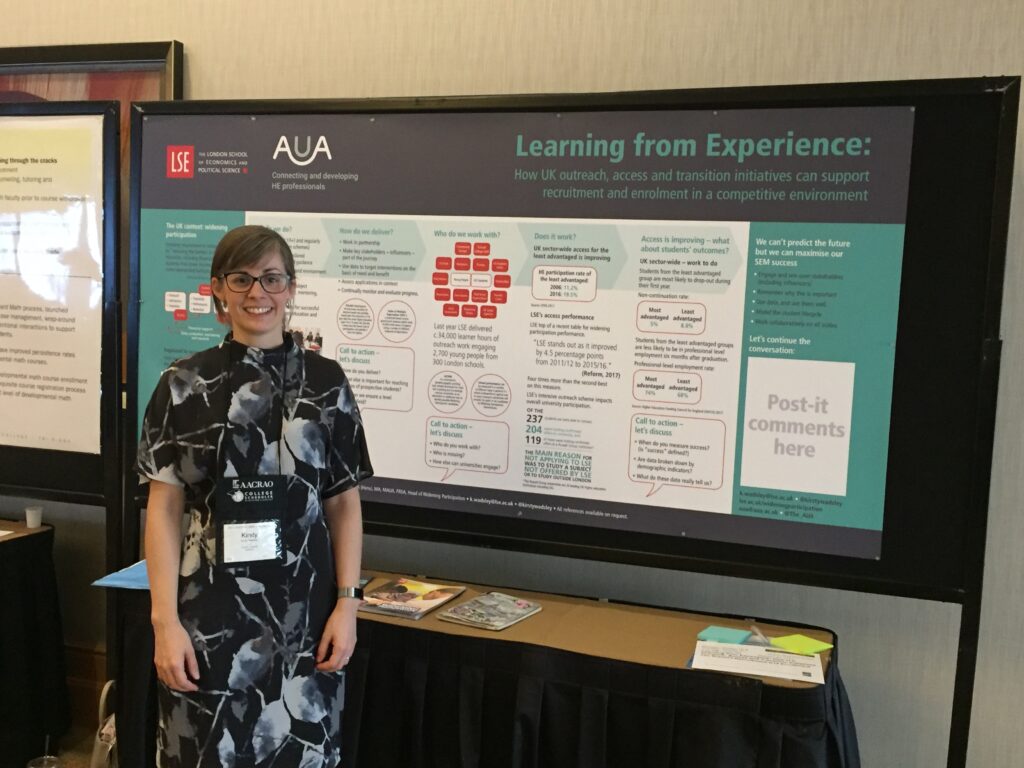
For enrollment managers, one of the ways of achieving personal mastery is through developing professional competencies and proficiencies in Strategic Enrollment Management (SEM). For those new to SEM, here is one of my favorite definitions:
Enrollment management is a comprehensive and coordinated process that enables a college [or university] to identify enrollment goals that are allied with its mission, its strategic plan, its environment, and its resources, and to reach those goals through the effective integration of administrative processes, student services, curriculum planning, and market analysis.” (Kerlin, 2008)
This can be achieved by reading some of the SEM classics and the SEM Quarterly journal, or by continuing the development of personal mastery by engaging with colleagues engaged in their own professional development.
Some will choose graduate programs or courses/experiences that culminate in a certification of some type. But for many of us, it is about coming to the AACRAO Strategic Enrollment Management Conference, which is celebrating this year its 30th conference in Las Vegas on October 25-28, 2020. Topics typically include: SEM culture, leveraging technology and data, career development, student success, and reaching optimal enrollment.
An important way to contribute to your own personal mastery in SEM is to actively participate in the conference. Currently, conference planners are promoting a Call for Proposals, where you can submit proposals for a best practice session, a poster, round-table, or a stop and share discussion on SEM hot topics, SEM research, or innovative ways institutions are implementing SEM. Proposals from multiple institutions or types of institutions are encouraged, as are proposals from Canadian and international institutions.
If you are thinking of submitting a proposal and want to discuss some ideas, send me an email at Clayton.Smith@uwindsor.ca (I am the director of the AACRAO SEM Conference!).
Whether you submit a proposal or not, let me encourage you to join us in Las Vegas this fall to enhance your personal mastery with SEM.
-Clayton Smith
Kerlin, C. (2008). Community college roadmap for the enrollment management journey. College and University, 83(4,), p. 11.
Seng. P. M. (1990). The fifth discipline The art and practice of the learning organization. New York: Currency, Doubleday.

Connecting Today’s Postsecondary Classroom to the Open Future
Postsecondary presidents and administrators are concerned about the rising cost of textbooks, with 85% of leaders supporting the use of OER’s (Lederman, 2019, March 13). Many education faculty members are increasingly looking to make use of OERs to customize their teaching resources to ensure that they are a good fit for the courses they are teaching. This is especially true for instructors engaged in teaching interdisciplinary courses in educational administration, policy, and leadership where there is no currently available open or online textbook.
At this year’s Canadian Society for the Study of Higher Education Conference, which will be held May 31-June 2, 2020 at Western University in London, Ontario, I will be joined by two of my University of Windsor colleagues (Mark Lubrick and Carson Babich) as cochairs for the panel, “Connecting Today’s Postsecondary Classroom to the Open Future: Open Education Resources (OER’s) Empower the Teaching of Educational Administration, Policy, and Leadership,” which will focus on the use of OER’s to teach interdisciplinary courses through the exploration of new pedagogical approaches.
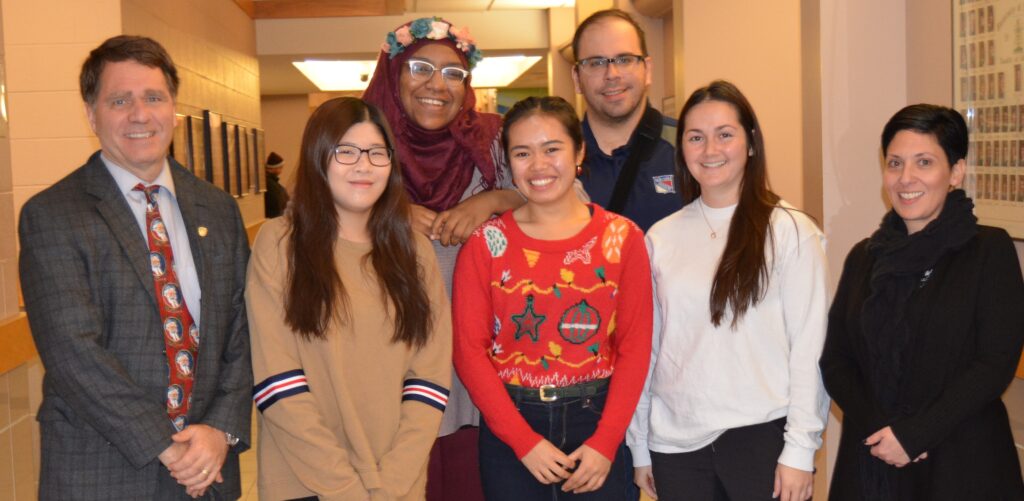
This panel will focus on two main research questions. How are postsecondary faculty making use of OER’s to teach interdisciplinary courses in educational administration, policy, and leadership with a particular focus on learning organizations? What specific factors should be considered when using OER’s to teach interdisciplinary courses?
Consider submitting a proposal. Some possible topics that you may want to consider could include: accessibility, class discussions, connection from one discipline to another, epistemology, equity, ethics evaluating/choosing a resource, experiential learning, flipped teaching, online collaborative teaching (OCT), pedagogical innovation, and research done around OER use in interdisciplinary courses
For more information contact me at Clayton.Smith@uwindsor.ca.
-Clayton Smith
Recent Comments